
Seraph Young Mural
This mural is about two windows; Two windows of opportunity that were opened
in Utah history. The first window was opened in the Salt Lake City Hall on Valentine's
Day in 1870. Twenty three year old Seraph Young was the first woman to cast her ballot
in the Utah Territiories and quite possibly in boundaries more far reaching. This
municipal vote took place without much fanfare or publicity and was short lived.
This window was closed in 1887 when Congress passed the Edmunds-Tucker Antipolygamy
Act.
The second window of women's suffrage would be opened largely due to the efforts of three visionary women: Emmeline B. Wells, Sarah M. Kimball, and Emily Richards. These women championed this cause for women by climbing the staircase of adversity, prejudice, historical culture, opposition of top state leaders and national government and resistance to change. The challenge to open this second window was accomplished one hard fought step at a time. Today we must climb these same stairs in order to improve the quality of life now and to provide a better future for our children.
After three weeks of research I was familiar with the history of the Utah suffrage
and the role
of the notable women who were involved. I wanted to create a mural that depicted
the literal scene
as well as the symbolic meaning of the events that shaped the future.

I wanted to depict a location with a view of two windows. Fortunately the original
building where
Seraph Young voted still existed, and better yet, had been renovated. It was the
Council Hall
on Capitol Hill.
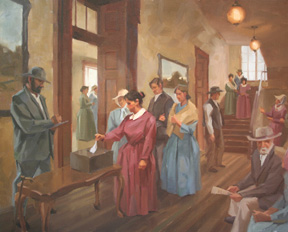
The small sketch was created using approximate poses and costumes.


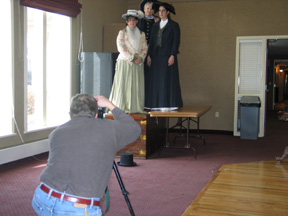
After the sketch was approved I began additional research in order to get the details
accurate.
This included furniture, costume, and interior research.

Hundreds of photos were taken to capture each element of the sketch.
These photos were assembled to recreate the sketch.
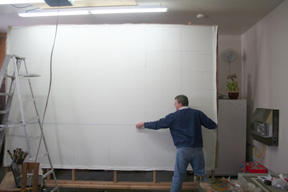
A large piece of canvas was then stretched over a custom-built easel.
Grid lines were drawn and the sketch was transferred to the primed canvas.
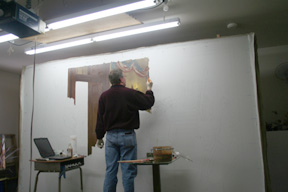
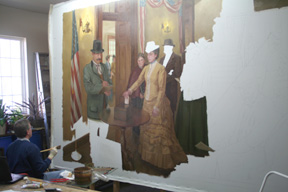
The painting process proceeded over a period of about two months.

Finished Mural
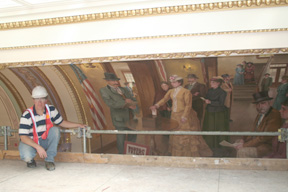
The mural was then taken off of the easel and then taken to the Capitol Building
for installation.
A final varnish coat was then applied and allowed to dry.